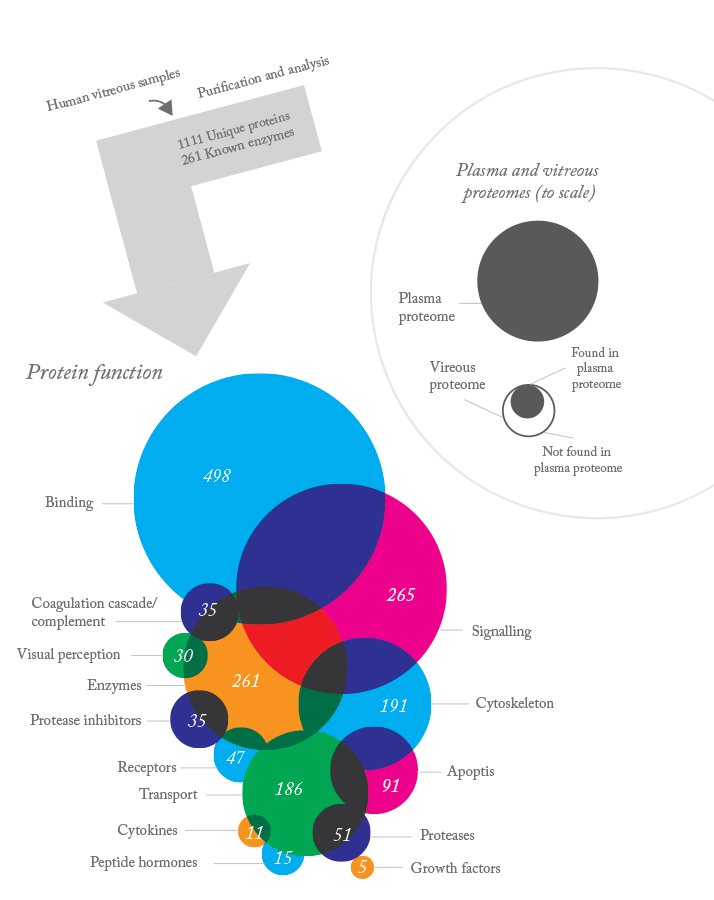
The vitreous humor, comprising four-fifths of the volume of the eyeball, is a transparent, colorless, gelatinous mass that holds the eye tautly in place. It also sustains the morphology and function of adjacent tissues through a complex but defined collection of proteins.
A detailed list of the proteins in the vitreous is a first step to understanding the structure’s biological processes. Recently, a team led by Jürgen Kopitz of the Institute of Pathology, University of Heidelberg applied in-depth proteomic screening technologies to the human vitreous (1).
- S. Aretz et al., “In-depth mass spectrometric mapping of the human vitreous proteome,” Proteome Sci, 11, 22 (2013).
